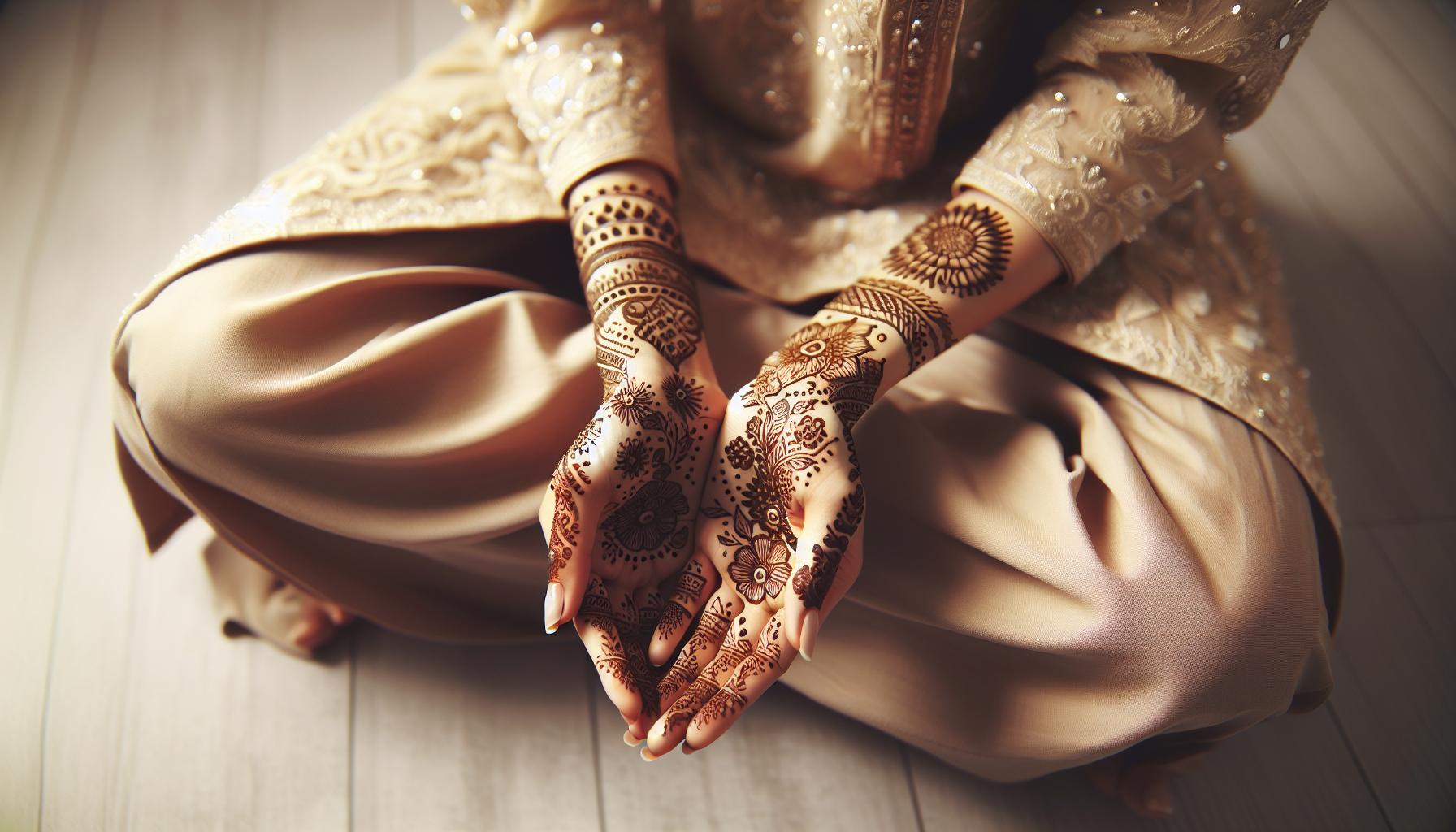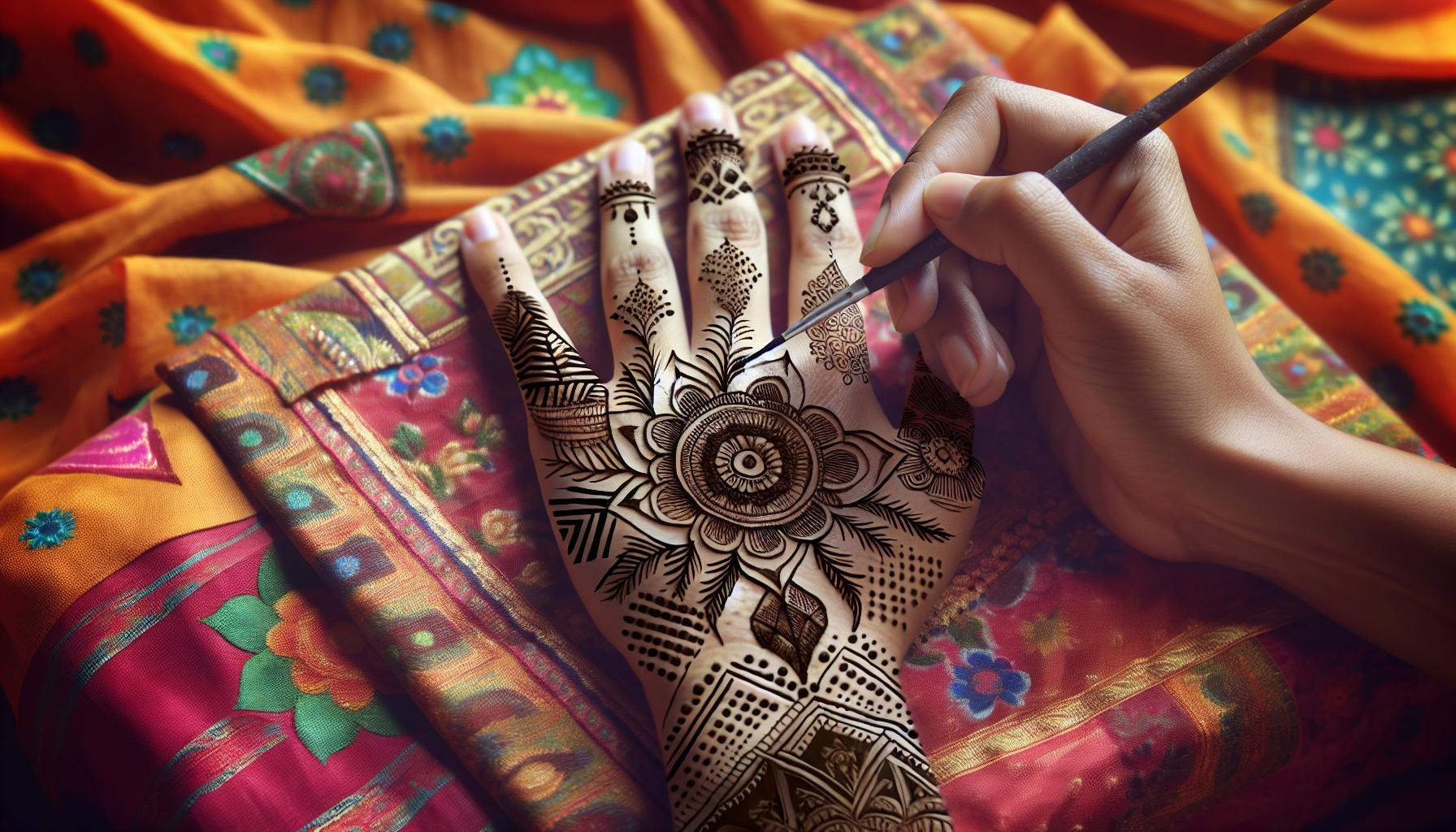Mehndi designs transform ordinary hands into stunning works of art with their intricate patterns and rich cultural significance. From weddings to festivals these temporary tattoos have captivated people worldwide with their delicate beauty and meaningful symbolism.
Simple mehndi designs offer a perfect blend of elegance and practicality for those who want to embrace this ancient art form without spending hours under the cone. These uncomplicated patterns pack a visual punch while being easy to apply making them ideal for beginners and busy individuals alike. Whether it’s a minimalist floral motif or geometric shapes these designs prove that sometimes less truly is more in the world of henna artistry.
Beautiful Mehndi:0t6bpdvzmsu= Simple Mehndi Design
Mehndi, also known as henna art, involves applying natural dye from the henna plant to create temporary decorative patterns on the skin. This beautiful mehndi:0t6bpdvzmsu= simple mehndi design ancient form of body art dates back over 5,000 years across various cultures in South Asia, the Middle East and North Africa.
Origins and Traditions
The practice of beautiful mehndi:0t6bpdvzmsu= simple mehndi design originated in ancient Egypt, spreading through trade routes to India, Pakistan and neighboring regions. Ancient Egyptian mummies revealed henna-stained hair and nails, indicating its use in early civilizations. In Indian tradition, mehndi application marks significant celebrations like weddings, festivals and religious ceremonies. Middle Eastern cultures incorporate mehndi during Eid celebrations, while Moroccan traditions feature it during the Night of the Henna ceremony for brides.
Symbolism in Mehndi Art
The intricate patterns in beautiful mehndi:0t6bpdvzmsu= simple mehndi design carry deep symbolic meanings across cultures. Peacock motifs represent beauty and grace in Indian designs. Lotus flowers symbolize spiritual awakening and purity. Geometric patterns signify balance and harmony in Islamic art traditions. Traditional Arabic designs feature vines and leaves to represent growth and continuous life cycles. The darkness of the mehndi stain traditionally indicates the strength of love between a bride and groom in South Asian wedding customs.
Essential Tools and Materials for Mehndi Design

Creating beautiful beautiful mehndi:0t6bpdvzmsu= simple mehndi design requires specific tools and high-quality materials to achieve optimal results. These essential items ensure smooth application and vibrant staining on the skin.
Choosing the Right Henna Paste
Fresh henna paste serves as the foundation for stunning beautiful mehndi:0t6bpdvzmsu= simple mehndi design. Natural henna powder mixed with essential oils like eucalyptus tea tree or lavender creates the ideal consistency. The paste texture resembles thick toothpaste at room temperature. Dark green henna powder produces the deepest stains when mixed with acidic ingredients such as lemon juice or coffee. Pre-made henna cones from reputable suppliers offer convenience while maintaining quality. Store henna paste in airtight containers at room temperature for 24-48 hours before use to release optimal dye content.
Application Tools
Professional mehndi artists rely on specific tools to create precise beautiful mehndi:0t6bpdvzmsu= simple mehndi design. Plastic cones fitted with various tip sizes enable controlled line work from 1mm to 3mm thickness. Metal-tipped jacquard bottles provide consistent flow for detailed patterns. Fine-point applicators work best for intricate elements like dots paisleys mandalas. Cotton swabs help clean edges remove mistakes during application. Eucalyptus oil supplies aid in darkening the final stain. Tissue papers protect completed designs while drying. Plastic wrap seals moisture allowing deeper color development. LED lights illuminate work areas for enhanced visibility during detailed applications.
Basic Mehndi Patterns for Beginners

Basic beautiful mehndi:0t6bpdvzmsu= simple mehndi design patterns offer an entry point into the art of henna design through uncomplicated motifs that create stunning results. These foundational patterns focus on essential elements that beginners master before progressing to complex designs.
Simple Floral Designs
Floral patterns start with basic flower shapes using dots and curved lines. Creating a central dot surrounded by 5-7 petals forms the foundation of traditional flower motifs. Artists incorporate leaves by drawing simple teardrop shapes alongside the blooms. Small buds appear between larger flowers through three connected dots. Connecting elements like vines link multiple flowers together using continuous curved lines. Filling spaces between flowers with small dots or dashes adds texture without complexity. Popular beginner-friendly florals include daisies marigolds lotus flowers.
Easy Geometric Patterns
Geometric beautiful mehndi:0t6bpdvzmsu= simple mehndi design begin with fundamental shapes like circles triangles squares. Combining two triangles creates a simple star pattern that serves as a central focal point. Straight parallel lines form borders bands around the wrist fingers. Checkered patterns emerge from intersecting straight lines at 90-degree angles. Basic zigzag patterns flow along fingers palm lines creating natural movement. Dotted lines provide texture without requiring precise line work. Common geometric elements include diamonds crescents hexagons arranged in repeating sequences. Grid patterns allow beginners to maintain symmetry spacing consistency.
Step-by-Step Tutorial for Simple Mehndi Designs

Creating elegant beautiful mehndi:0t6bpdvzmsu= simple mehndi design starts with mastering fundamental techniques and gradually building complexity. Here’s a detailed guide to crafting beautiful patterns.
Starting with Basic Shapes
Basic geometric shapes form the foundation of mehndi artistry. Dots create anchor points for connecting elements, spacing these 1-2 centimeters apart ensures balanced designs. Lines extend from dots in straight paths or gentle curves to establish borders. Circles appear in 3-4 sizes ranging from tiny dots to quarter-sized rounds, serving as focal points. Triangles emerge by connecting three equidistant dots, while squares form perfect bases for filling patterns. Practice drawing these shapes repeatedly on paper until muscle memory develops, maintaining consistent pressure during application to achieve uniform lines.
Building Beautiful Patterns
Connecting basic shapes creates intricate beautiful mehndi:0t6bpdvzmsu= simple mehndi design patterns. Small circles transform into flower petals when arranged in groups of 5-6 around a central point. Lines extend into graceful vines by adding small leaf shapes at 45-degree angles. Geometric patterns expand through repetition, placing diamonds in rows of 3-4 to form bands. Fill spaces between primary designs with tiny dots, dashes or curved lines to add depth. Layer elements by starting from the center point, working outward in symmetrical sections. Incorporate swirls by starting with a tight spiral, gradually expanding the curve while maintaining even spacing.
Tips for Long-Lasting Mehndi Results
Achieving a deep, long-lasting mehndi stain requires proper application techniques and aftercare practices. The following guidelines ensure optimal color development and extended wear of the design.
Application Best Practices
- Apply mehndi paste in a warm environment to enhance dye release
- Create consistent line thickness by maintaining steady pressure during application
- Leave the paste on for 6-8 hours or overnight for maximum color intensity
- Mix 3-4 drops of lemon juice into the henna paste to boost dye penetration
- Cover completed designs with medical tape or plastic wrap to retain moisture
- Test the paste consistency on paper before skin application to ensure smooth flow
- Keep the design area warm using a space heater or heat lamp during drying
- Allow designs to air dry naturally for 20-30 minutes before wrapping
- Scrape dried paste gently with a butter knife rather than washing it off
- Apply a mixture of equal parts sugar and lemon juice to seal the design
- Avoid water contact for 24 hours after paste removal
- Moisturize the design area with coconut oil or olive oil twice daily
- Skip chlorinated pools swimming for 48 hours post-application
- Keep the skin warm by wearing gloves in cold weather
- Protect the design from harsh soaps detergents during initial color development
- Apply a natural balm containing eucalyptus oil to darken the stain
Popular Placement Areas for Simple Mehndi
Mehndi designs enhance different body areas with varying patterns and styles. The most sought-after placement areas showcase the versatility of simple beautiful mehndi:0t6bpdvzmsu= simple mehndi design.
Hand and Palm Designs
Palm beautiful mehndi:0t6bpdvzmsu= simple mehndi design create focal points through centered mandala patterns radiating outward from the middle. The fingertips feature delicate dots cascading down to join intricate line work across the palm. Traditional Arabic designs incorporate negative space between bold geometric patterns on the palm’s natural creases. Finger designs include thin bands wrapping around each digit with small florals or paisley accents. The back of the hand displays connected vine patterns linking scattered floral elements through graceful curves.
Wrist and Arm Patterns
Wrist beautiful mehndi:0t6bpdvzmsu= simple mehndi design serve as natural bangles with repeating motifs encircling the joint. Minimalist arm patterns start at the wrist with delicate chains extending upward toward the elbow. Geometric bands alternate with empty spaces to create striking visual rhythm along the forearm. Single-line designs trace elegant paths up the arm incorporating small floral clusters at intervals. The inner arm accommodates flowing vine patterns with leaves branching outward from a central stem. Arabic-inspired designs feature bold crescents interconnected by fine lines along the outer arm.
Honoring Centuries Of Cultural Tradition
Simple beautiful mehndi:0t6bpdvzmsu= simple mehndi design offer a perfect blend of traditional artistry and modern practicality. Their timeless appeal lies in their ability to create stunning results without overwhelming complexity. Whether adorning hands for a special occasion or exploring this ancient art form as a beginner the beauty of simple mehndi designs continues to captivate people worldwide.
Anyone can master the basics of beautiful mehndi:0t6bpdvzmsu= simple mehndi design through practice patience and proper technique. With the right tools quality henna paste and attention to fundamental patterns these elegant designs will enhance any celebration while honoring centuries of cultural tradition.

